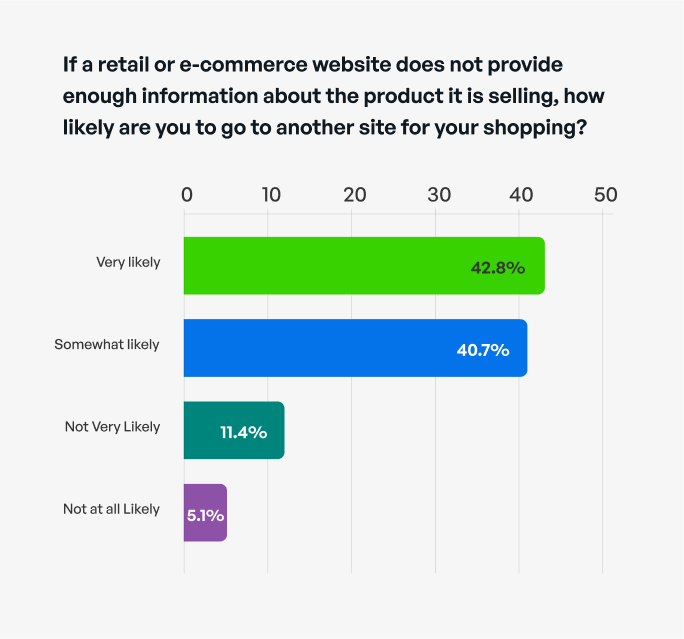Next up in our series exploring the dynamic world of retail product data and how retailers can get ahead to improve margins, increase sales and become more efficient with data. Click here to read the first installation: Bad Product Content is Bleeding Your Retail Profits.
At the helm of this series is Tim Marshall, Syndigo’s Vice President of Retail Partnerships with many years of industry experience working with the worlds’ largest retailers and brands across multiple segments. Tim will be your guide through retail trends and challenges and allow you to hear from some experts who are helping to shape the direction of our industry.
In the dynamic world of e-commerce, standardized product content serves as the backbone for efficient product data syndication. A common language and set of standards facilitate consistency across platforms. But even so, the journey from supplier to retailer to consumer is fraught with challenges.
Retailers rely on standardized content to maintain consistency, but also face the daunting task of convincing suppliers to align with their content requirements. The interplay between standardized, “above-the-fold” content and rich, “below-the-fold” content complicates the equation even further.
Retailers’ Unique Challenges in Product Content Syndication
For retailers, managing product content isn’t just about creating or displaying information—it’s about orchestrating an ecosystem of suppliers, processes, and platforms.
This isn’t a cosmetic exercise—comprehensive, accessible product content is an essential ingredient in retail success. The 2024 State of Product Content report found that 91% of consumers are more likely to return to a retailer if they can readily find the product information they want while shopping.

But delivering a powerful retail product experience is easier said than done. Several factors make approaching this particularly complex:
Convincing Suppliers to Align
Without standardization at the source, retailers risk receiving incomplete, inconsistent, or non-compliant data that requires extensive manual intervention.
In order to get the data and content needed for effective product experiences, retailers rely on a diverse supplier base to submit content in a uniform, standardized format. Suppliers may vary widely in their technical capabilities, resources, and understanding of the retailer’s requirements, and getting them aligned toward a common goal is a significant hurdle.
Beyond suggestions and persuasion tactics, retailers can take a more direct approach and require use of a customized vendor portal.
A vendor portal can provide transparency to the retailer’s customized requirements for vendor onboarding and item submission, guiding suppliers to submit necessary information in the preferred format. While this route typically gets the needed content to the retailer, they must consider the experience for the suppliers. Unless the portal is intuitive and designed with an effective user interface, it may be frustrating to use.
Considerations like constant and consistent investment in updates of the platform, and empowering suppliers to connect their own Product Information Management (PIM) systems must be paramount in the minds of retailers when balancing the need for great content and supplier experience.
Managing Incoming Content
The scope and scale of the challenge retailers face when approaching product data is daunting. A single brand may have a catalog of dozens, hundreds or even thousands of items to manage. But a retailer or marketplace often must deal with order of magnitude more, reconciling data, content and media files for assortments from its entire supplier community.
The influx of product data from multiple suppliers must be ingested, validated, and organized. That means investing in tools and processes to ensure the data is accurate, comprehensive, and compliant with their platform’s standards. This phase often requires robust PIM systems and ongoing collaboration with suppliers to address data quality issues proactively.
Transforming Content for E-commerce Performance
Once product content is received, it needs to be tailored and enriched for consumer-facing platforms, often requiring additional layers of customization for specific channels.
Shopper expectations about their online product experience perpetually rise, and they will abandon a site if they can’t find the content they desire. Syndigo found that 83% of consumers reported being ready to ditch an e-commerce site when they encounter a lack of product information.

Retailers must ensure that the content is optimized for search engines, adheres to channel-specific guidelines, and resonates with target audiences. The rapid pace of e-commerce necessitates agility, as delays in content readiness can lead to missed sales opportunities.
The Symbiotic Relationship between Standardized & Enhanced Content
Standardized and Enhanced Content are not competitors; they’re partners in crafting an exceptional product experience.
Together, they provide a balance between efficiency and engagement:
Above-the-Fold: Standardized Content
This content delivers essential product information that enables discoverability and quick decision-making. Examples include product titles, SKUs, key features, pricing, and availability. Standardized content serves as the foundation for consistent messaging across platforms, ensuring customers can trust the data no matter where they encounter the product.
Below-the-Fold: Rich Media Content
Enhanced content, such as 360-degree image views, videos, customer reviews, and interactive elements, comes into play below the fold. This type of content helps tell a product’s full story, appealing to emotions and enabling a deeper understanding of the product’s value. Enhanced content is particularly effective for complex products, where additional context or use-case demonstrations can make or break a sale.
The Symbiosis
Standardized content gets customers through the door, but rich media content keeps them engaged and drives conversions. Together, they reduce cart abandonment, increase time on page, and build trust. Retailers who master the balance between these two types of content are better positioned to meet customer expectations and outpace competitors.
Bridging the Gap- Key Strategies for Retailers
To overcome these challenges and leverage the symbiotic power of standardized and rich media content, retailers should consider the following:
Streamline Supplier Collaboration:
Provide suppliers with clear, standardized processes and guidelines to simplify content submission. Offer training or resources to less tech-savvy suppliers to ensure compliance. Use collaborative tools that allow real-time feedback and correction of content discrepancies.
Provide Options:
Consider the suppliers’ perspective in your decision making. Most suppliers sell their products in many retailers and across multiple platforms. Understand the daunting task of optimizing their content for their brands across many retailers’ sites. The ability for a supplier to follow standardized and repeatable processes for sharing of standardized content is imperative for their efficiency as well.
Invest in Scalable Infrastructure:
Implement advanced PIM and Master Data Management (MDM) systems that can handle high volumes of incoming data while maintaining quality and consistency. Integrate automation to reduce manual workload and accelerate time-to-market for product listings.
Optimize Content Distribution:
Leverage content syndication platforms to seamlessly distribute tailored content to various channels while maintaining control over formatting and messaging. Use content health and vendor compliance analytics to track content performance and refine strategies based on consumer engagement.
Combine Content Layers Thoughtfully:
Prioritize “above-the-fold” content for accuracy and relevance, ensuring it meets customer needs at a glance. Invest in creating immersive below-the-fold experiences that deepen customer understanding and satisfaction. Test and iterate to find the optimal blend of standardized and rich media content for your audience.
Standardized product content is critical for operational efficiency, but it’s only part of the puzzle. Retailers face the dual challenge of managing incoming content from suppliers and transforming it into consumer-facing experiences that resonate.
Ultimately, success in e-commerce depends on mastering both the art and science of product content, ensuring it tells the full story while meeting the technical and emotional needs of today’s digital-first consumers.










